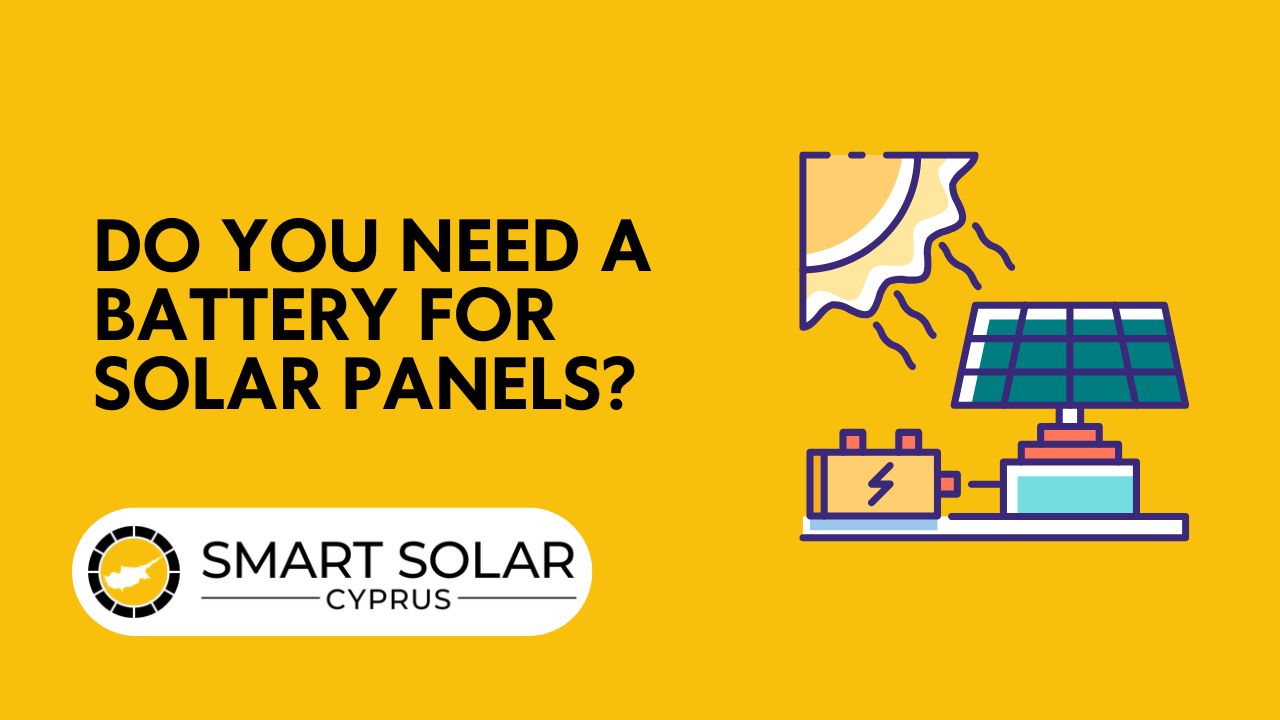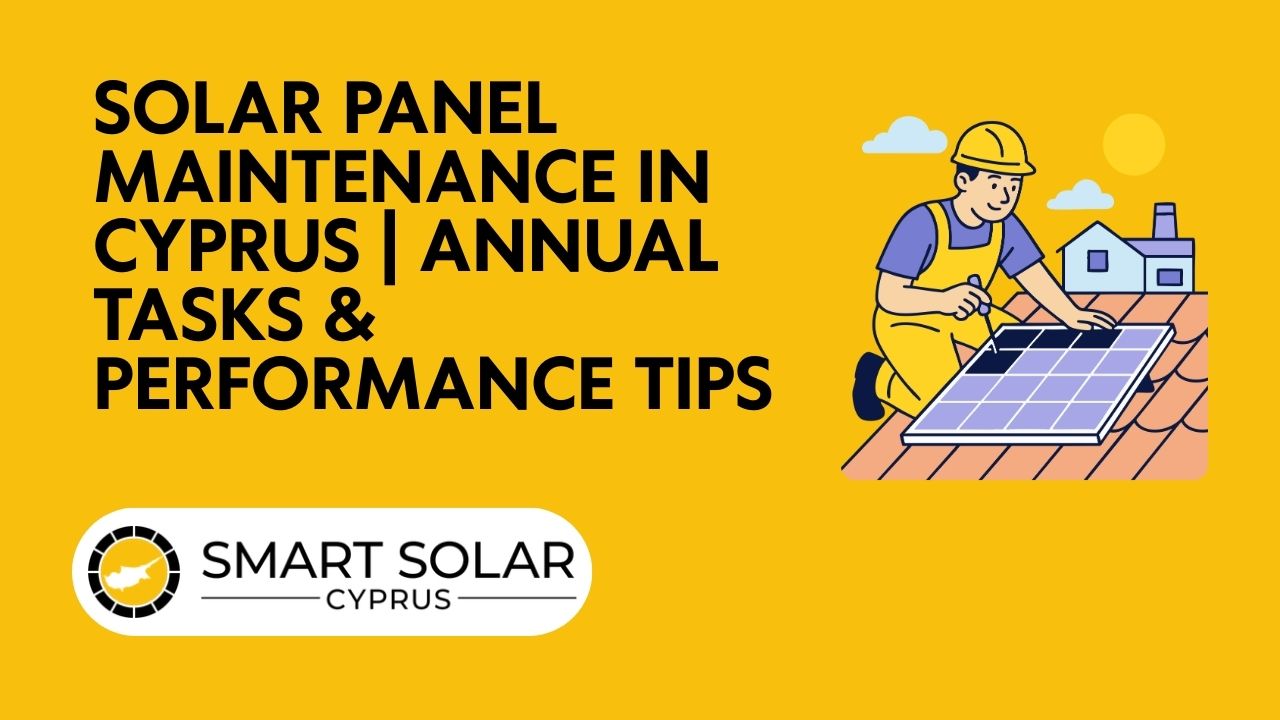Wasted Sunshine: When the Grid Says No
You’ve probably watched your solar panels hum along on a cloudless day, feeding clean power into your home and the grid. Then you check your meter and see that your system isn’t producing what it could. That’s curtailment — the grid telling your panels to turn down or shut off because there’s too much solar power flowing into lines that can’t handle it. On an island that soaks up sunshine, it feels like a bad joke. Your investment sits idling while you pay for expensive evening electricity.
Imagine brewing a pot of coffee, only to pour half down the drain because your mug is too small. Curtailment is the same waste. It can be frustrating, but it isn’t random. It’s a symptom of an energy system under stress and a sign that homeowners need to think differently about how they use the power they generate.
The Hidden Problem: Solar Curtailment in Cyprus
Curtailment isn’t a term most people hear before they install panels. Yet it’s increasingly common. As thousands of households and businesses feed excess electricity back to the Electricity Authority of Cyprus, the lines and transformers that were designed for one‑way flows from large power plants start to strain. To protect equipment and maintain stability, the grid operator temporarily curtails generation from small systems.
For you, that means lost kilowatt‑hours. Your solar panels could be producing more during peak sun, but they’re throttled. Instead of banking surplus credits, you get less for your money. Later, when the sun sets, you buy power at full price. Over time, repeated curtailment eats into the savings you expected. It also undermines the environmental promise of solar by forcing the island to burn more fossil fuels than necessary.
Why Curtailment Happens
To understand curtailment, picture the grid as an old road system built for trucks carrying cargo one way — from a power plant to your house. Now imagine thousands of small cars trying to go in the opposite direction. When too many show up at once, there are traffic jams. The voltage rises, and the operator must manage it.
There are three main reasons for these jams:
- Voltage instability. Solar injections can push voltage above safe levels in neighbourhood feeders, especially when many systems feed into the same line at midday.
- Lack of storage. In countries with hydro reservoirs or large batteries, excess solar can be stored and released later. Cyprus has no large‑scale storage, so when supply outstrips demand, the only option is to spill.
- Grid congestion. Distribution lines in some areas weren’t designed for two‑way flows. They can’t carry the extra electricity your panels export. When lines get congested, the operator tells certain generators to curtail.
Add to this the fact that Cyprus is an energy island — not connected to other national grids — and every surplus kilowatt must be used or wasted locally. Curtailment is a safety valve, but it’s bad for consumers who invested in solar expecting uninterrupted generation.
Why Battery Storage Is the Antidote
If curtailment is like pouring coffee down the drain, storage is like having a thermos. Instead of sending surplus power back when the grid doesn’t need it, you capture that energy for later. A battery installed with your solar system charges during midday peaks and discharges in the evening, when you’d otherwise buy electricity at the highest rates.
Here’s what storage does for you:
- It turns wasted energy into savings. Every kilowatt‑hour stored and used later reduces what you pay at night. Instead of exporting at low value and importing at high value, you keep the difference in your pocket.
- It protects you from policy changes. As net‑metering winds down and new self‑consumption rules come in, exporting surplus power may earn less than it does today. A battery helps you maximize self‑consumption and reduces your reliance on whatever tariffs the future brings.
- It stabilizes the grid. By smoothing out peaks and valleys in local demand, battery owners help reduce strain on the network. When thousands of homes shift to storing midday power, the grid operator sees less congestion, and curtailment becomes less necessary.
- It gives you energy independence. With a battery, you’re less vulnerable to price spikes or supply disruptions. During outages, some systems can keep essential circuits running, giving you peace of mind.
The Business Case for Batteries
Adding storage to an existing PV system isn’t just about technology—it’s about economics. Electricity rates in Cyprus are among the highest in Europe. Night‑time power costs more than midday power, and that gap is expected to widen. Every kilowatt‑hour you store and use later replaces electricity you’d buy at peak prices. If your panels generate 25–30 kWh per day and you only use half of it during daylight, a battery can capture the rest. Over a year, that can add up to thousands of euros in saved energy costs.
Government incentives make the numbers even more compelling. Current grant schemes cover a significant portion of battery installation costs, sometimes up to €5,000 per system. When you factor in grants, a well‑sized battery can pay for itself in five to eight years. After the payback period, nearly all the energy it cycles is free, making your long‑term return on investment attractive compared with many traditional financial products.
There’s also an opportunity cost to doing nothing. If net‑metering credits shrink or disappear, exporting surplus energy could become far less valuable. Without storage, you might find yourself selling power at a low tariff and buying it back at a high tariff, effectively subsidizing the grid rather than saving money. A battery flips that dynamic, letting you hold onto what you generate and avoiding expensive purchases later.
Preparing for the New Market
The shift from net‑metering to a market‑based self‑consumption regime is part of a broader liberalization of Cyprus’s electricity sector. While details are still evolving, the direction is clear: self‑producers will need to think like participants in an energy market, choosing how to manage their surplus. Batteries position you to make the most of that choice.
Here are a few practical steps to prepare:
- Assess your consumption patterns. Look at your daily and seasonal electricity use. How much do you consume after sunset? A battery sized to cover evening loads will deliver the best return.
- Choose the right technology. Lithium‑ion batteries dominate because they offer high efficiency, long lifespans and compact footprints. But other chemistries might suit specific needs. Work with an installer who understands Cyprus’s climate and grid requirements.
- Factor in grants and deadlines. Grant programs run on specific cycles. Applying while funds are available can reduce your upfront cost significantly. Keep an eye on registration deadlines and required documentation.
- Think about integration. If your current inverter isn’t battery‑ready, you might need an upgrade. Modern hybrid inverters make adding storage easier, and smart controllers optimize when you charge and discharge based on tariff rates.
- Plan for maintenance. Batteries require less upkeep than you might think—an annual inspection and occasional firmware updates are usually enough. But you’ll want to check ventilation, keep them at moderate temperatures, and monitor performance through the provided apps.
Take the Next Step
Curtailment isn’t going away overnight. Until Cyprus builds massive interconnectors or island‑wide storage, the grid will continue to spill excess solar. You can either accept that waste or choose a system that keeps your energy in your own hands.
Investing in a battery is like upgrading from a basic savings account to one that locks in your interest rate and protects you from market swings. It protects your solar investment against policy changes and makes every ray of sunshine count. It also supports the broader transition to a more resilient, sustainable grid.
If you’re ready to see how storage can work for your home, reach out to a trusted installer for a personalized assessment. You’ll get clarity on sizing, costs, payback periods and grant availability. Instead of watching your panels sit idle while the grid says “no,” you’ll be sipping from a thermos filled with your own sunshine—day and night.

Πόσα χρήματα μπορείτε να εξοικονομήσετε με την ηλιακή ενέργεια;











